Prospector Popcorn Provides Meaningful Work for People with Disabilities
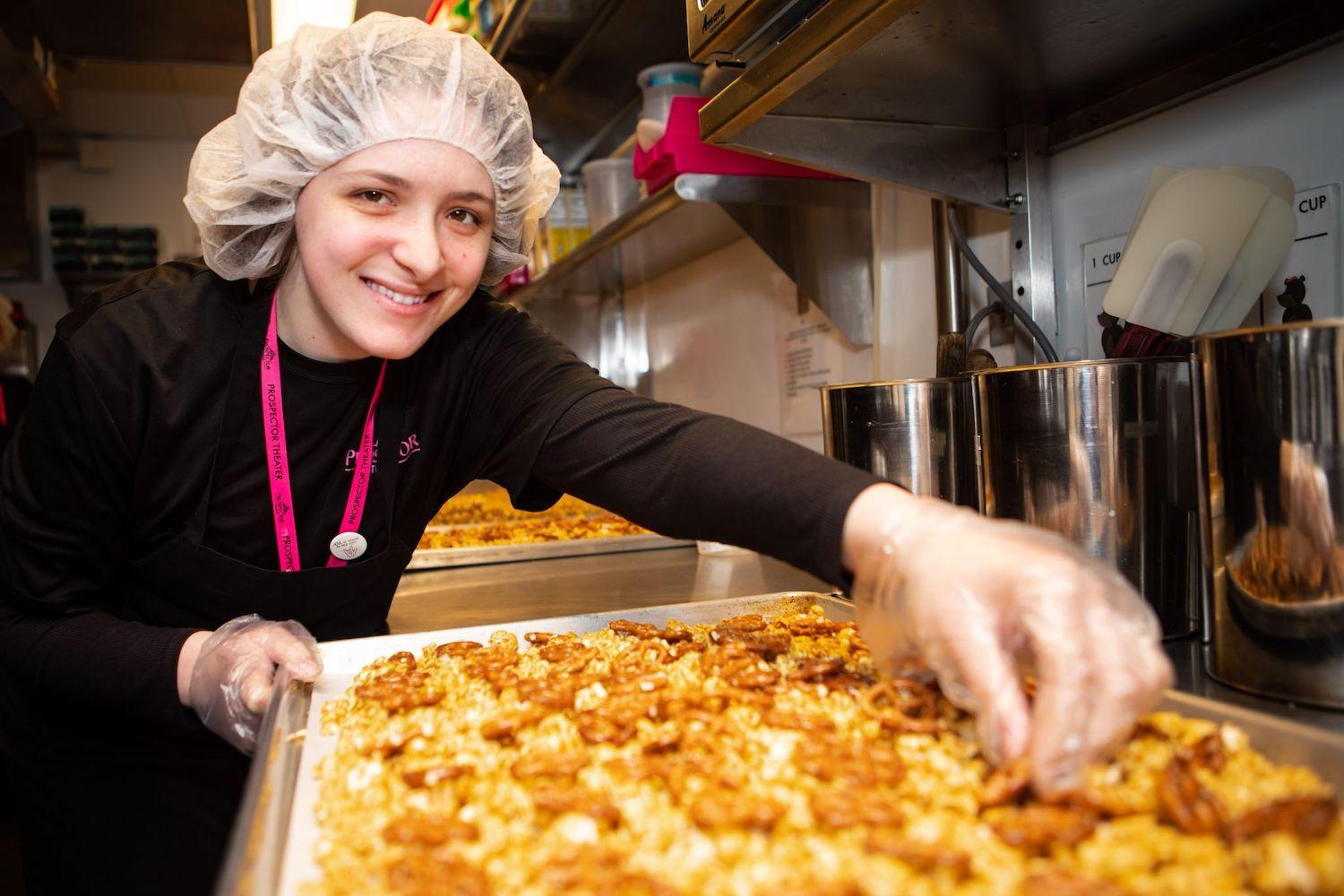
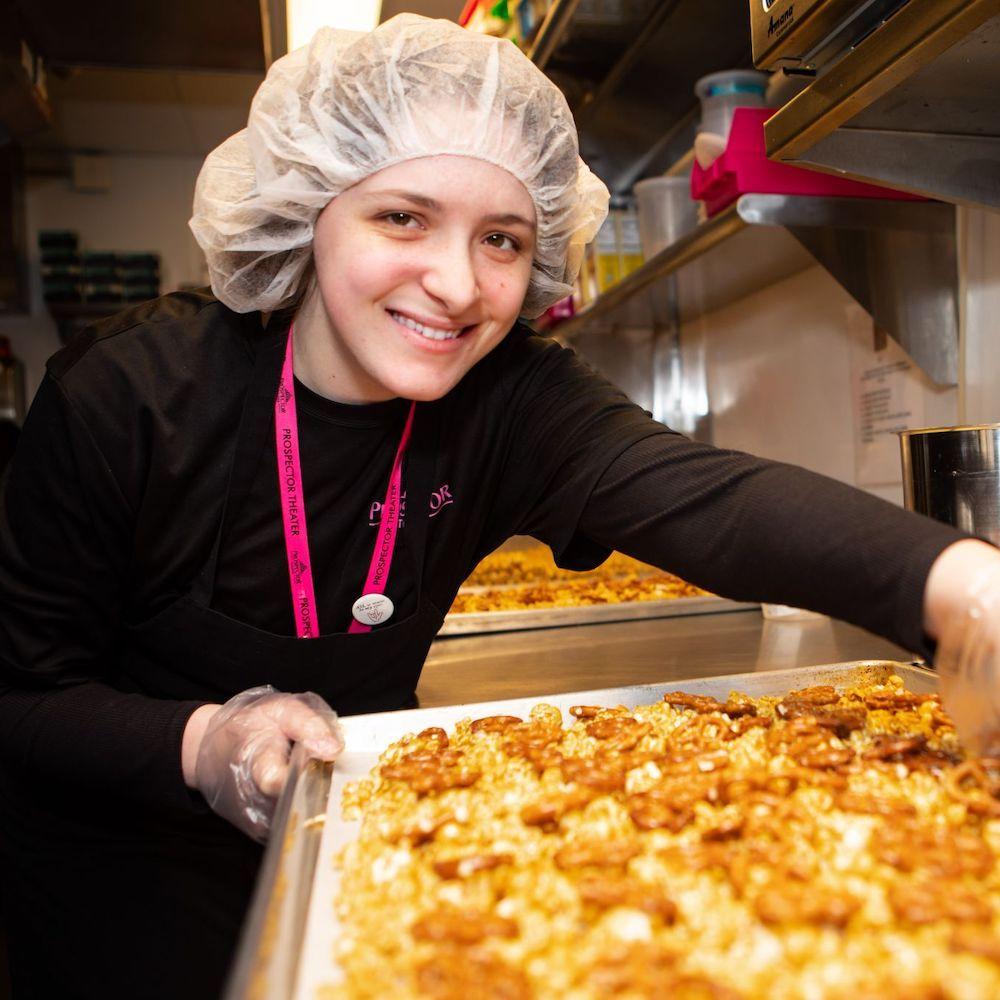
Gourmet popcorn maker Prospector Popcorn is setting the bar for disability inclusion. The nonprofit's mission is not just to employ people with disabilities, but also to give them the opportunity to shine.
The popcorn brand addresses the significant barriers to employment people with disabilities face by providing meaningful work that offers a better way of life through financial independence. TriplePundit spoke with Ryan Wenke, director of operations and technology at the nonprofit that started the brand, to learn more.
Opportunities come with competitive wages
"Roughly 80 percent of Americans with disabilities do not have a job," Wenke said. "Obviously, it's not because we don't want to work. It's that we're not given enough opportunities to work. Or the opportunities that are given are things like pushing shopping carts, bagging groceries, things that we don't find to be meaningful."
A lot of employers offer tedious jobs to people with disabilities and are allowed to pay them less than minimum wage through a certification from the Department of Labor. These waivers allow employers to pay based on the employee’s perceived ability to do the job less efficiently than workers without disabilities — instead of finding accommodations that could allow them to produce comparable work. For many, that means earning less than $4 an hour.
Prospector Popcorn takes a very different approach. "Our mission is providing competitive and inclusive employment for people with disabilities," Wenke said. "The average hourly rate that we have is about $18 an hour."
But it’s not just about the competitive wage. "No job is off limits here, and there's a variety of ways we do that. There are low-tech solutions and there are also high-tech solutions."
The pandemic pivot
The beginning of Prospector Popcorn can be traced to the Prospector Theater in Ridgefield, Connecticut. There weren’t any movie theaters within 10 miles of the city, Wenke said. In 2014, the nonprofit set out to address that need while providing jobs for the local community — specifically for people who self-identify as having a disability. When the COVID-19 pandemic hit, the theater ceased normal operations and a new opportunity arose.
"We've sold gourmet popcorn since we opened the concession stands," he said. "And when the pandemic hit, it kind of accelerated the idea of turning our core toward popcorn, so that what we sold in person could now go to homes across the country. We've always longed to share our mission with families and businesses that aren't able to come to Connecticut to see a movie."
Prospector Popcorn comes in sweet and savory flavors like strawberry ice cream, maple walnut ice cream, buffalo cheddar, sweet and spicy and a cheddar-caramel combo.
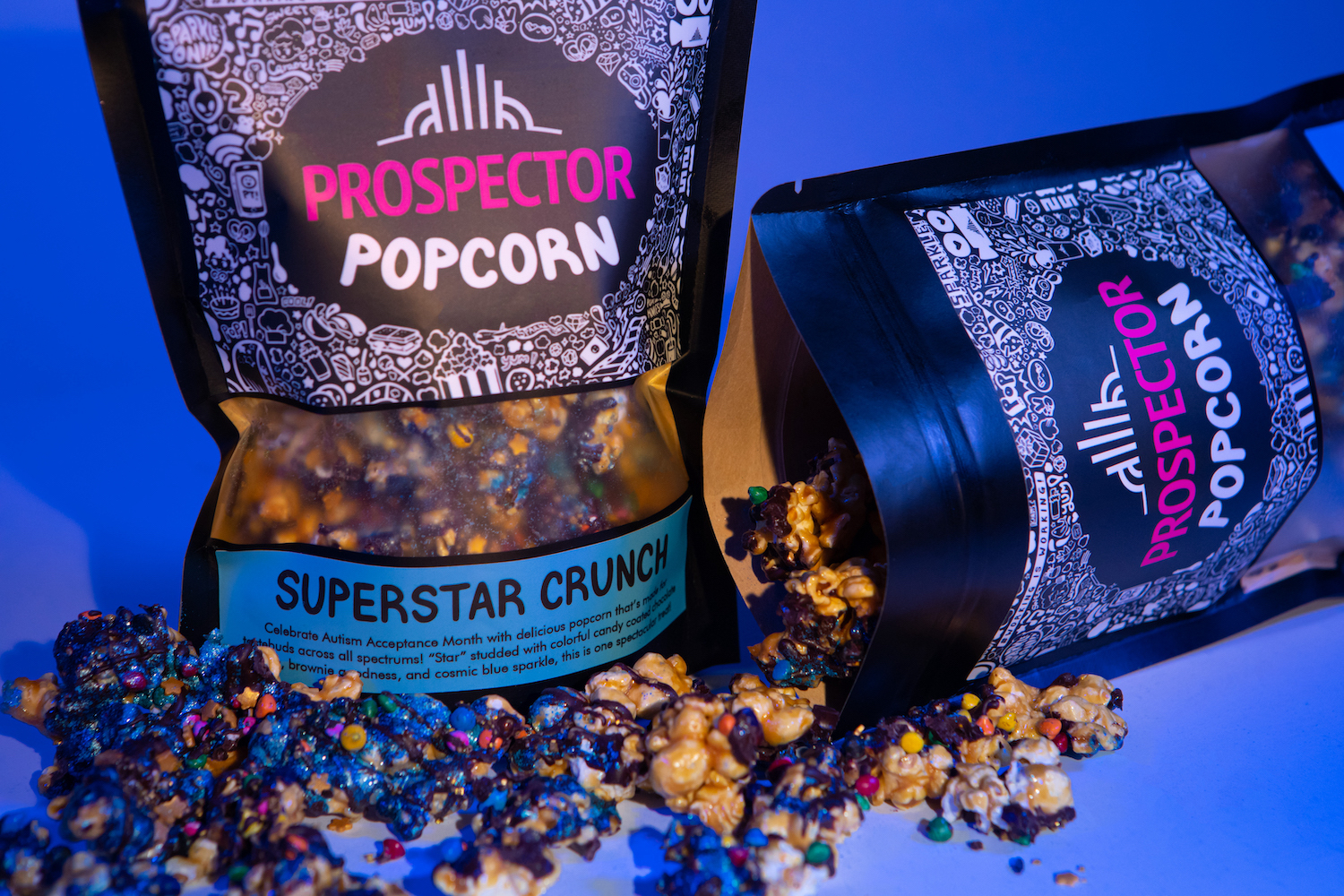
A variety of jobs for a variety of talents
"Just like the theater, there are so many jobs that go into one bag of popcorn," Wenke said. "You have to pop the popcorn. You have a marketing team to sell it. Our production team makes the graphics and the labels."
When Wenke says no job is off-limits, he means it. The nonprofit makes accommodations to remove accessibility barriers. The elevator installed in the theater is one example: If someone who uses a wheelchair wants to work in the projection room, they can use the elevator to do so.
"When it comes to popcorn specifically, we have everything color-coded to help with organization. We have images — large images — as we do have some Prospects that have difficulty reading," he said, explaining that the brand refers to employees as Prospects. "We have graphics in the kitchen that show measuring sizes represented by Mama Bear, Baby Bear, Goldilocks and Papa Bear. We have C-Pen readers that can scan a text and read it out loud."
Out of 125 Prospects, or employees, 75 percent identify as having a disability, Wenke said. That is much higher than the average business. And unlike many other businesses that employ people with disabilities, there isn’t a classification of jobs that are solely available to them. Those who self-identify as having a disability occupy all kinds of roles within the company — from the kitchen and box office all the way to the C-suite.
"There are many times when people come into the theater and say, 'Hey, I heard you have this mission, but everything's running smoothly,'" he said. "I think there's some notion that when you come here you're going to see people screaming, shouting, running. It's totally not that because, again, matching the appropriate job with the appropriate person is what's going to occur [here]. So there’s no distinction. I'm held to the same standards as somebody who just started yesterday. And that's how it has to be."
A role model for other businesses
Prospector’s model is inclusive and competitive, Wenke said. "We're all about teaching and training and not gatekeeping jobs." That model is making a difference in people’s lives — for those who stay at Prospector long-term and for those who gain valuable skills that allow them to move on to other things.
"We've had so many Prospects that, through earning a paycheck, move out of their parents’ home and get their first apartment," Wenke said. "Finally, get that first car. Go on a nice vacation for themselves. We've also had Prospects who have gone on to work at other jobs like working at Apple, or working at a real estate company in town, or working as a bartender after getting started in our cafe."
Prospector Popcorn isn’t gatekeeping its methods either. The nonprofit is eager to share its model with other businesses and is doing some consulting. "We don't want to be the only player in town," Wenke said.
Images courtesy of Prospector Popcorn
Your iPhone Contains More Recycled Materials Than You Thought


Mobile devices like Apple's iPhone contain at least 30 chemical elements — from common metals like aluminum, copper, lithium, silver and gold, to rare earth elements like yttrium, terbium, lanthanum, neodymium and dysprosium, all of which are extracted from the earth through mining.
Apple is looking to reduce demand for these elements and others by quietly expanding its use of recycled content. The company reached a new high for recycled materials in 2021, with nearly 20 percent recycled content across all products, according to its 2022 Environmental Progress Report released last week. It also introduced certified recycled gold for the first time in 2021, and more than doubled the use of recycled tungsten, rare earth elements and cobalt, the company reported.
Recovering more materials for use in future products helps reduce mining. For example, a single metric ton of iPhone components contains the same amount of gold and copper that's typically extracted from 2,000 metric tons of mined rock.
“We are making real progress in our work to address the climate crisis and to one day make our products without taking anything from the earth,” Lisa Jackson, Apple’s vice president of environment, policy and social initiatives, said in a public statement. “Our rapid pace of innovation is already helping our teams use today’s products to build tomorrow’s.”
Increasingly, that means the use of recycling robots like Daisy, which the company says can disassemble up to 1.2 million phones a year and recover key materials like rare earths. With recently enhanced capability, Daisy can now take apart 23 models of iPhone, and Apple has offered to license the robot's patents to other companies and researchers free of charge.
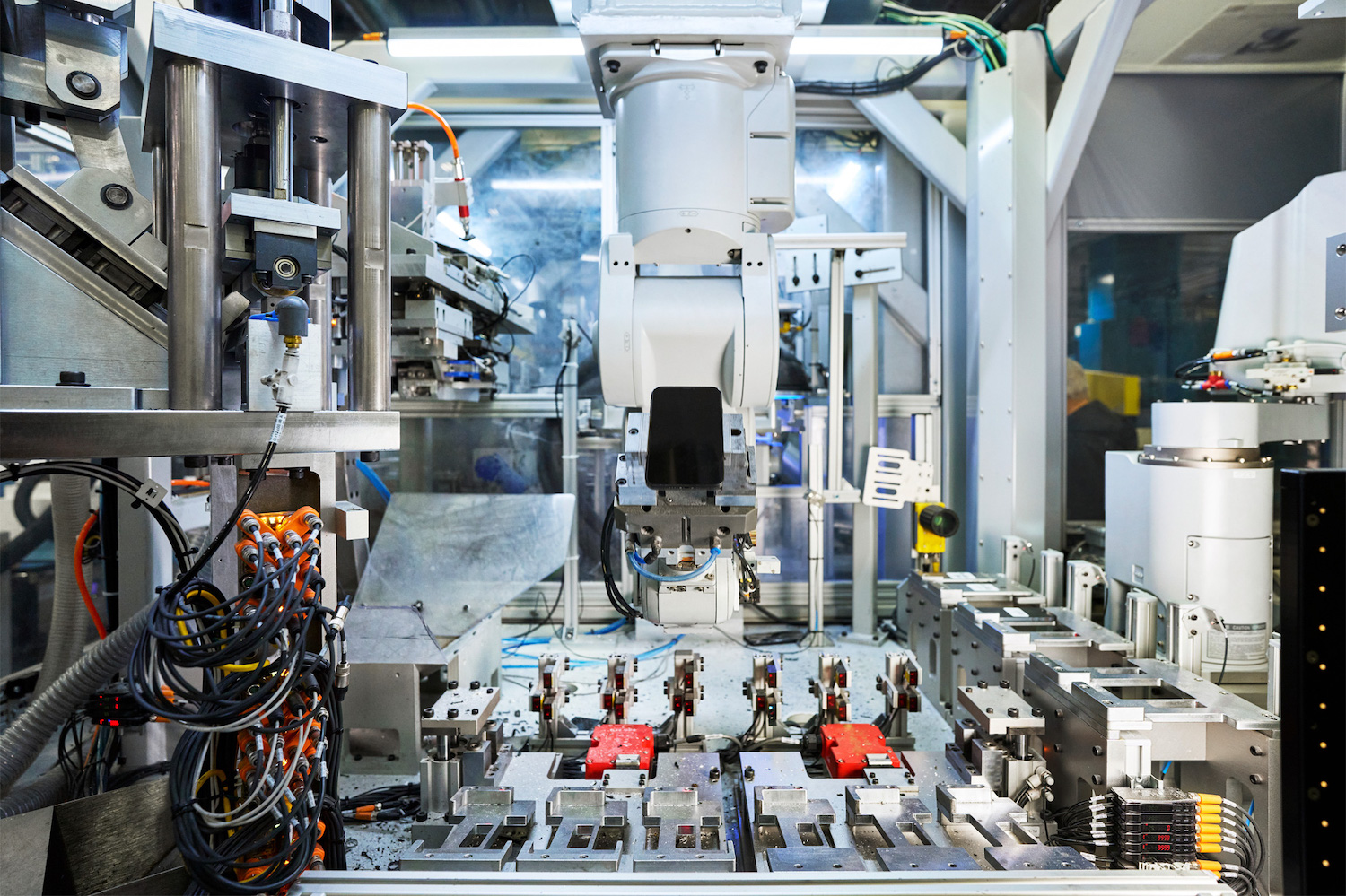
Apple rolled out Taz, a cousin to Daisy, last year — which uses "shredder-like technology" to recover more rare earth elements from devices. An additional robot, Dave, disassembles taptic engines, the technology that provides users with tactile feedback to simulate actions, such as clicks on a stationary touch screen. These steps help in the recovery of valuable rare earth magnets, tungsten and steel, the company said.
All totaled, Apple products that came off the assembly lines in 2021 included 45 percent certified recycled rare earth elements, the company's highest mark ever.
The company has also committed to extend product lifetimes through refurbishment. It reported sending more than 12 million devices and accessories to new owners for reuse in 2021, extending their lifetime and reducing the need for future mining. In the long term, Apple aims to use only renewable or recyclable materials in its products, a goal announced in 2017.
The company's 2022 report also highlighted its progress toward achieving carbon neutrality by 2030. In a year when many other companies saw large increases in their footprints and the company’s revenue grew by 33 percent, Apple’s net emissions remained flat. The company has been carbon neutral for its global operations since 2020, including 100 percent renewable energy used to power all offices, stores and data centers since 2018.
And Apple says it's spreading the gospel of renewables, with Apple suppliers more than doubling their use of clean power from 2020 to 2021, according to the report. As of April 2023, 213 of the company’s manufacturing partners have pledged to power all Apple production with renewables across 25 countries.
The company has also reduced plastic in its packaging by 75 percent since 2015, on the way eliminating plastic packaging entirely by 2025.
Image credits: Bagus Hernawan/Unsplash and Apple
Could This CO2-Eating Microbe Revolutionize Carbon Capture?

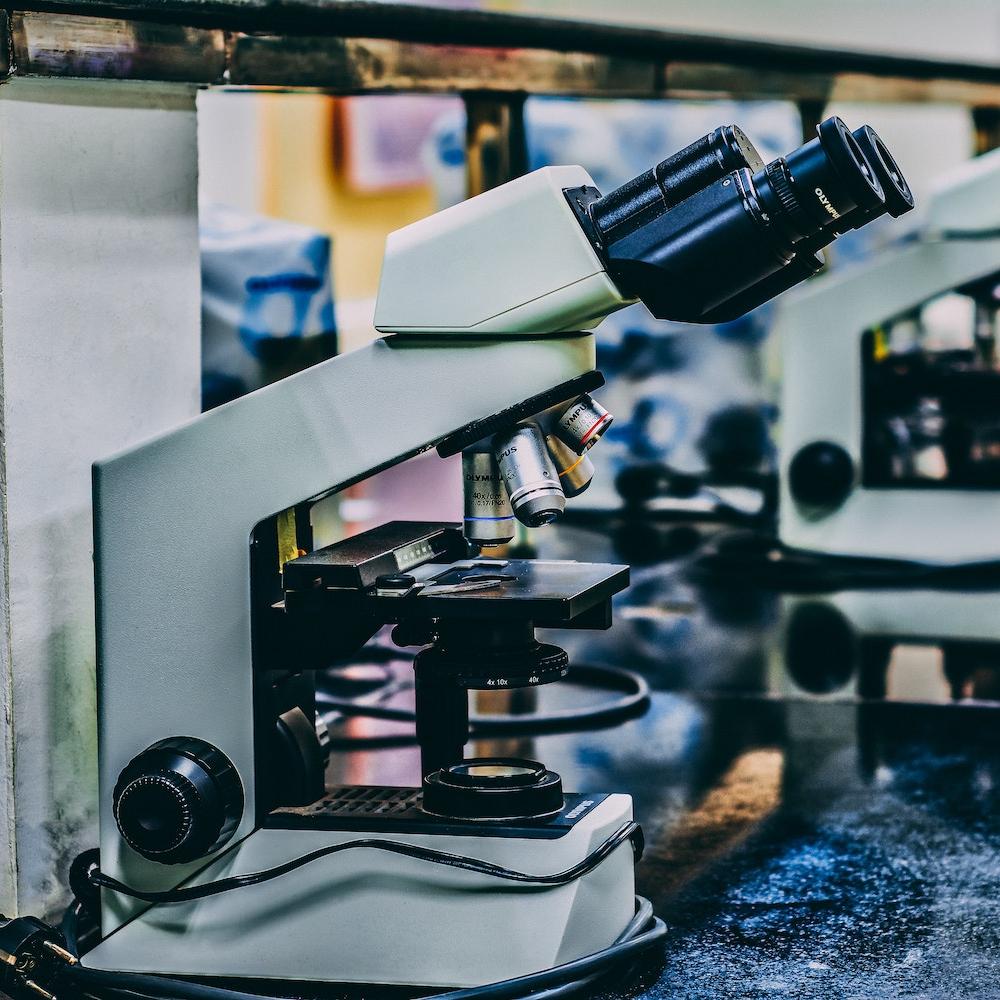
Microorganisms that thrive in some of the most inhospitable places on earth — carbon-dioxide-rich environments like volcanic vents and hot springs — could be the start of new carbon capture technology.
The microbial science company Seed Health recently discovered efficient, carbon-dioxide-eating cyanobacteria that outperform the microbes previously thought to be best for the task.
The findings are part of a collaboration with the Two Frontiers Project (2FP), which looks to advance human and environmental health with research on the oceans and space, and funded by Seed Health’s environmental research offshoot, SeedLabs.
The Intergovernmental Panel on Climate Change (IPCC) identified carbon uptake as crucial for mitigating climate change. “While there is no silver-bullet solution to climate change, we know that breakthroughs in carbon capture, along with many different technologies, will need to work and scale in tandem to make a meaningful impact,” Raja Dhir, Seed Health’s co-founder and co-CEO, told TriplePundit. “A first step to scaling microbial-based solutions is ensuring that the scientific community has access to data on beneficial microbes and their capabilities.”
That’s why Seed Health researchers collected over 1,000 samples from Sicily’s coast and Colorado’s Rocky Mountains. It’s the largest project of its kind, Dhir said.
The team collaborated with several universities for its first expedition near Vulcano, a small island off the coast of Sicily. They sampled water, sediment and other sources of microbial life around volcanic vents releasing carbon dioxide. Researchers took the samples to a lab and used them to culture microbes capable of consuming the most carbon. That’s when they found the never-before-seen bacteria that most efficiently captures the greenhouse gas.
With the support of the National Institute of Geophysics and Volcanology and the local community of Vulcano Island, the expedition was jointly lead by researchers from the University of Palermo, Harvard Medical School and Weill Cornell Medical College.
Researchers are looking to identify these microorganisms not only because of the need for carbon capture, but also because they can adapt to survive in places where humans never could, said Braden Tierney, executive director of 2FP.
“It made sense to go, ‘Well in extreme environments where there are a lot of CO2, we might find microbes that have adapted to live off it, let’s go look for them,” Tierney said. “Because you're capitalizing on 3.8 billion years of evolution. That’s how long these things have been learning to survive.”
Tierney describes the microbes as “nature’s alchemists” because they absorb compounds like CO2 and produce things that might be useful to humans like energy and bioplastic made from renewable resources.
The 2FP team is creating an open-source “living database” of extreme microbiomes that combines DNA-sequencing data with thousands of distinct environmental and biological samples, Dhir said. This database will be accessible to the scientific community so researchers can reference the stored samples to culture additional organisms of interest.
“What that means is we have these freezers filled with bacteria and organisms that have been enriched in high-CO2 environments,” Tierney said. “When we can sequence them, that means we can look at their genomes and say, ‘Wow, this is a really interesting enzyme for capturing CO2 that maybe has never been characterized before.’”
Using this approach to preserve valuable data and material for future research and development has never been done at such a scale in this branch of microbiology, Dhir said, and only time will tell the extent of its impact.
Image credit: Ousa Chea/Unsplash
Healthy Buildings Becoming the New Normal in Real Estate


On a pleasant April weekend, several hundred people carrying bags and pushing strollers meander through the Tanger Outlets National Harbor. Three years ago, this bustling shopping center across the river from the nation’s capital was brought to a standstill, temporarily shuttered like many retail and business sites nationwide to prevent the spread of COVID-19. Although some public health protocols remain in place here, most signs of the worst pandemic in a century have disappeared.
Yet, even as Tanger Factory Outlet Centers Inc., the property’s North Carolina-based owner, has embraced the return to normalcy, it is one of thousands of real estate companies executing a new strategy to promote long-term wellness and safety: Making its buildings healthier.
Earlier this year, Tanger announced it achieved the International WELL Building Institute’s (IWBI) WELL Health-Safety Rating for its 36 North American shopping centers and its corporate headquarters. The designation, launched by IWBI during the pandemic and now used globally across more than 3.8 billion square feet of space, defines health leadership related to cleaning and sanitation, emergency preparedness, air and water quality, and other facilities management criteria.
In a statement, Leslie Swanson, Tanger’s executive vice president and chief operating officer, said the designation is helping the company “build confidence that all our facilities are a safe place for communities to gather,” by protecting the health of shoppers and store workers.
Like video conferencing and remote working, the shift to healthier buildings predates COVID-19 but intensified at the onset of the pandemic. According to research by the nonprofit Global Wellness Institute, the number of healthy buildings collectively certified by providers grew nearly five-fold from 2018 to mid-2021. IWBI, which offers a suite of health and wellness designations for buildings and companies, recorded a total of about 500 million square feet of registered or certified space through its first six years of operation. Since 2020, it has added an astonishing 4 billion square feet of new projects across its WELL offerings.
Real estate owners are driving demand for healthy buildings as they seek to retain tenants and strengthen leasing activity at a time when the pandemic still casts a long shadow on occupancy, said Wendy Feldman Block, executive managing director at Savills, a global real estate advisory firm.
By adding protections for occupant health, the WELL Health-Safety Rating “gives owners a path to get tenants back in the building, and gives tenants a path to get their workers back in,” she said. “Seeing the WELL seal makes you feel better about going into your building.”
IWBI now says it is enrolling an average of nearly 4 million square feet of projects per day, with active engagements with more than 20 percent of the Fortune 500. Those projects include retail destinations like Tanger outlet centers, the offices of corporate giants like Goldman Sachs, Accenture and EY, and iconic structures like the Empire State Building and Yankee Stadium.
The surge in demand for healthier space — though remarkable — isn’t a surprise, said Rachel Hodgdon, IWBI’s president and CEO.
“The primary purpose of buildings has always been to serve the needs of the people inside of them,” Hodgdon said. “The pandemic sharpened that focus.”
Americans on average spend about 90 percent of their lives indoors where they are at significantly greater risk of exposure to pollutants, according to the U.S. Environmental Protection Agency. Building construction codes in most U.S. states have long specified minimum ventilation requirements for clean air delivery to reduce pollutants and disease transmission, while real estate sustainability frameworks such as the U.S. Green Building Council’s LEED rating system and the International Living Future Institute’s Living Building Challenge began referencing certain health measures before IWBI’s launch in 2014.
But while the rationale for healthy buildings is well established, the real estate industry is racing to understand just how far the benefits extend.
A study published in late 2022 in the Journal of Building and Environment found that healthier buildings significantly improve worker satisfaction, wellness and productivity. Participants in the study, which analyzed the impact of WELL Certification using more than 1,300 pre- and post-occupancy survey responses, reported a nearly 30 percent post-certification improvement in overall satisfaction with their workplace, a 10 percent perceived improvement in mental health, a 10-point increase in median productivity, and a 26 percent perceived increase in wellbeing, including energy levels and motivation at work.
Those results add to a growing body of research linking healthier space to reduced employee absenteeism, improved cognitive function and lower healthcare costs for companies, as well as stronger real estate financial returns from rental premiums and longer lease terms.
The overall progress in creating and quantifying healthier space is validating, Feldman Block said. She was involved in 2017 in the world’s first lease to receive both WELL and LEED certification at the Platinum levels and remembers when talk of certifying a building as “healthy” was met with indifference.
“At the time, nobody was familiar with WELL," she said. "Landlords, contractors and most architects — they’d never heard of it.”
Now, many property owners and occupiers with portfolios are budgeting for certification in what she calls a “widespread embrace” of health and wellness. “Landlords know they have to talk about what they’re doing to protect health and safety. They have to be competitive," Feldman Block said.
She expects healthy building enrollment numbers to potentially recede from their peak as the real estate industry faces headwinds from inflation, permanent remote working and job cuts, especially in the tech sector. Microsoft, Amazon, Meta, Salesforce and Doordash are among the scores of companies to recently announce layoffs. Property owners are expecting to feel the impact as certain employers pull back on space needs.
But the long-term prognosis for healthy buildings remains excellent. IWBI has spent the past several years expanding its infrastructure and offerings, which now include a credentialing program for real estate professionals, Fannie Mae’s inclusion of WELL in it its Healthy Housing Rewards program, a dual-certification partnership with Enterprise Community Partners for affordable housing, and a workplace equity designation launched at the end of last year targeted at a broad swath of employers. It is also exploring a foray into the single-family housing market.
All of those initiatives are designed to accelerate the post-pandemic reach and impact of healthy buildings in a world that is projected to add as much new real estate space as currently exists in North America by 2030, Hodgdon said.
“If part of the legacy of COVID-19 is that it helped make buildings across the world healthier for people and better prepared for future public health emergencies,” she said, “that would be an excellent outcome.”
This article series is sponsored by the International WELL Building Institute (IWBI) and produced by the TriplePundit editorial team.
Image credit: R ARCHITECTURE/Unsplash
Rising Seas Are Forcing Climate Refugees to Abandon Their Island Homes


A Guna Yala boat merchant.
More than 1,000 members of an Indigenous tribe off the coast of Panama are being forced from their homes by the climate crisis. The Guna Yala people of Cardi Sugdub are facing flooding from rising seas, as their island home sinks 3.5 millimeters per year. They’re not the first climate refugees to face relocation, of course. And they won’t be the last. Truly, we’ve only just glimpsed the beginning of the social upheaval that is coming as the planet continues to warm — and the fact remains that those who are paying the highest price for climate change are also those who contribute the least when it comes to greenhouse gases.
Going under: Residents of the Guna Yala archipelago brace for evacuation
The Guna Yala archipelago, known to many as the San Blas Islands, is home to roughly 50,000 tribal members of the same name. The entirety of the archipelago is expected to be underwater soon, much of it within the next three decades. But Cardi Sugdub, or Crab Island, won’t last that long — its 1,200 residents are the first group in Latin America to undergo permanent evacuation due to rising seas.
“When the tide goes up, the water enters some houses and the people have to move their belongings to higher ground,” Pragnaben Mohan, a teacher on Cardi Sugdub, told the Wall Street Journal last fall when the situation got a wave of attention. The flooding is so bad that Mohan’s students and fellow teachers often have to wear rubber boots in order to navigate their classrooms.
"Filling, filling, filling all the time, because the water doesn't stop. It keeps going up," resident Augusto Boyd told CBS News this week. "It's difficult. Everything you did here stays behind." Like many of the tribe’s members, Boyd has been attempting to fight the rising waters with rocks and old coral — to no avail.
The beginning of the end: More climate refugees expected in the years to come
The move itself — which is set to take place this year — has been in the works for over a decade. And the Panamanian government recognizes it is only the beginning. The entire tribe will have to be relocated to the mainland by 2050.
Ironically, Cardi Sugdub is a densely populated tourist hub that makes do without cars or even motorcycles, CBS News reported. Yet with the loss of their home, the Guna Yala are paying the ultimate price for carbon emissions that they had no part in creating.
The injustice is palatable and mirrors the experience of island-dwelling people around the world — some of whom have already started migrating to higher ground as climate refugees, as well as others who are fighting to stave off the destruction of their homelands. The island nations of the South Pacific are at particular risk, prompting Vanuatu to demand action from the United Nations.
The country of less than a third of a million people has successfully lobbied the U.N. General Assembly to approach the International Court of Justice for both guidance on climate responsibility and to create a path for legal action against those countries that fail to meet their responsibilities. Vanuatu previously advanced a fossil fuel non-proliferation treaty to the U.N. as well.
Meanwhile, the Pacific island of Kiribati is quickly losing land and is projected to be the first nation to disappear entirely into rising seas. But a lack of immigration agreements with larger nations — many of whom are directly responsible for the crisis — has left its would-be migrants in a lurch, along with the citizens of Nauru and Tuvalu who are in a similar predicament. Indeed, when an Indigenous I-Kiribati man of Kiribati attempted to seek climate asylum in New Zealand 10 years ago, he was deported. Ioane Teitiota eventually entered a grievance with the U.N. Human Rights Committee. However, the committee failed to see any immediate danger to Teitiota’s life and sided with New Zealand, thus keeping the doors closed for climate refugees until further notice.
Traditional culture at risk
In that sense, the Guna Yala are fortunate. Their position as a part of Panama gives climate refugees the benefit of at least having a place to migrate. In fact, it is their own land that is being utilized in the transition.
Still, the situation is less than ideal for an Indigenous culture that is starkly different from the mainstream one that will absorb it. And while the people are determined to maintain their customs even after moving into the modern, planned community of La Barriada, it’s likely their island home has played a huge role in shielding their matrifocal, gender-fluid way of life.
"We carry that here, inside," Cardi Sugdub resident Magdalena Martinez told CBS News of the threat to their traditions. Let’s hope that’s enough to withstand the pressures of assimilation amid suburban life.
Image credit: Benjamin Achrainer/Pexels
Pilot Projects Advance Regenerative Agriculture — and Growers Are Crucial


Agriculture is the world’s largest industry and an immense emitter of greenhouse gases. While the evolving alternative — regenerative agriculture — mitigates the industry’s negative environmental impact, it lacks a legal and regulatory definition.
Regenerative agriculture is commonly described as a collection of practices that mitigate the impact of climate change and sustain natural habitats. It emphasizes ecosystem health through increased carbon sequestration and improved water quality, soil health and natural habitats.
Despite this, only 51 percent of research articles that reference regenerative agriculture define it, according to a review published in Frontiers in Sustainable Food Systems. And although 84 percent of practitioner organizations also define the term, when it is defined its meaning varies drastically. The lack of global consensus poses a challenge to advancing these practices and measuring the impact for growers, policymakers and researchers.
Protecting biodiversity and sustaining natural habitats is no easy task. The practices under the umbrella of regenerative agriculture require study, a trial-and-test method and, ideally, documentation — all of which pilot projects provide.
Pilot projects are high-stakes tests with long-term rewards
As the regenerative agriculture market grows, its challenges grow, too. Consumers’ have limited knowledge on best practices. And there is limited scientific understanding of some of its concepts such as carbon reduction and the potential of cover crops. Other challenges include production cost, resource cost and the high demand for low-cost goods.
Pilot projects are the best initial step in understanding and expanding regenerative agriculture practices to overcome these challenges. By creating standardization and communication, the projects help consumers understand and support the system. These projects help solidify successful practices and metrics to consider, provide insight to growing specific foods, and foster important partnerships between governments and companies. As definitions and results are solidified, more industry players can work together to overcome costs of regenerative agriculture and encourage its adoption.
Global interest in regenerative agriculture is growing — particularly in the private sector — as numerous companies engage with its practices in different ways. General Mills pledged to expand regenerative agriculture on 1 million acres of farmland by 2030. And groups like the Regenerative Organic Alliance have established certificates for regenerative agriculture. While all engagement with this concept is positive, pilot projects in particular hold tremendous opportunities to advance the practice.
What makes regenerative agriculture pilot projects successful
Regenerative agriculture pilot projects require resources, financial support, and a solid relationship between growers and project leaders.
Caitlin Birkholz, regenerative agriculture pillar lead at Kind Snacks, explained what is lacking in the regenerative agriculture industry and its pilot projects during an in-person tour of the Kind Almonds Acres Initiative plot. The company is working with one of its top almond suppliers, Ofi, to test six innovative agriculture practices across six plots within a 500-acre space in Fresno, California.
Similar projects often face challenges when growers aren’t included, Birkholz told reporters at the Fresno plot last month. "Something that is incredibly important when designing a regenerative agriculture project is to get close to the grower,” she said. “The grower is your most important asset. They know everything.”
Omitting growers from pilot projects often limits their ability to scale, Birkholz said. “A pilot can be really great. You can be really excited about a pilot. But if you don’t include the grower and the local community, it’s really hard to get those practices to be adopted by growers around the region.”
No location or environment is the same. These projects develop the location and growing-specific knowledge critical for regenerative agricultural practices. And align with broader industry interests and goals. All of which requires transparency, innovation in supply chains and relationship-building.
In addition to commitments and research, this industry requires testing. It is time for leaders to deliver.
Image credit: Zeno Group
Editor's Note: Travel and accommodations to California’s Central Valley were provided by Kind Snacks. Neither the author nor TriplePundit were required to write about the experience.
Companies Leading the Way on Second Chance Hiring
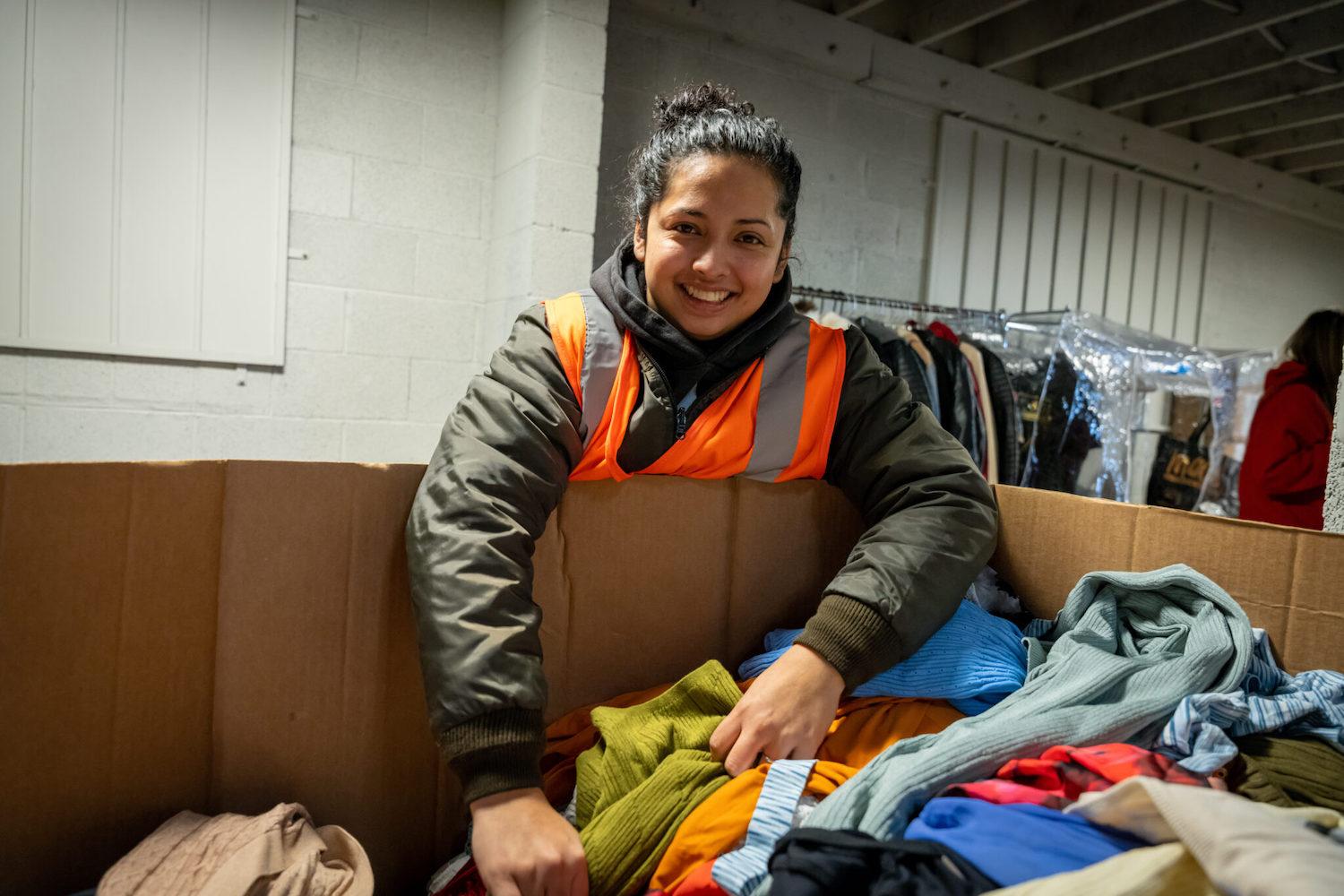
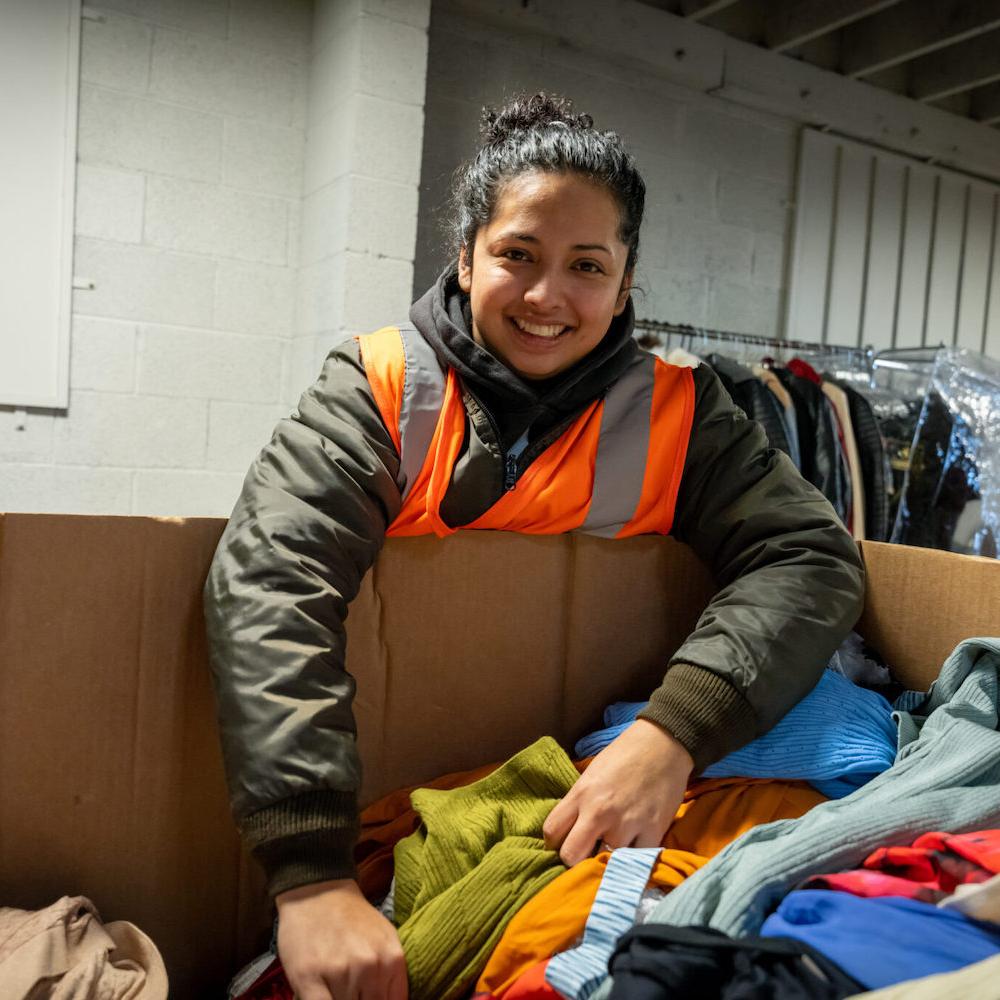
Homeboy Threads helps brands like Guess run clothing resale and recycling programs while offering jobs to formerly incarcerated people. (Image credit: Homeboy Industries)
Around 1 in 3 U.S. adults has a criminal record that would appear on a routine background screening. Even after serving their sentences, people with criminal justice histories are often cast aside by employers, locked out of housing, and deemed too high-risk for loans and other financial services. More than half of those leaving U.S. prisons are unemployed a year later, increasing the likelihood they’ll return.
Second chance hiring is based on the simple principle that a person's past does not define them, and those who have served their time should have a fair shot at employment and a place in their communities.
Not only does second chance hiring provide an opportunity for business to change lives, but there's also a massive economic incentive: Locking people with criminal backgrounds out of the workforce costs the U.S. economy an estimated $87 billion every year, according to JPMorgan Chase, which has grown into an outspoken advocate for second chance hiring. Here are some other companies that are leading the way on the practice as it begins to take hold across the private sector.
Second Chance Business Coalition brings big employers into the mix
The Second Chance Business Coalition launched in 2021 to provide companies with the tools, relationships, and expertise they need to advance second-chance opportunities within their organizations. Its membership has grown to nearly 50 large U.S. employers, from Best Buy and Target to Mastercard, Accenture and Deloitte.
About half of member companies reported on the internal changes they made within the coalition's first two years — and these early findings indicate a strong uptake of second-chance programming that goes beyond checking a box.
For example, of those members that reported data, nearly 75 percent said second-chance candidates made up more than 5 percent of their new hires. The majority of the coalition's corporate members also reviewed or updated their HR policies, established new programs to intentionally recruit second-chance candidates, and partnered with re-entry organizations on hiring and support for employees with records.
Still, challenges remain — with over half of members saying they faced regulatory hurdles when looking to hire people with any or certain types of criminal history. The coalition plans to release a set of guidelines later this month to outline the legal challenges employers face and provide guidance on how to address them.
Workforce and Justice Alliance connects newcomers and early adopters
Meanwhile, the Workforce and Justice Alliance launched last year to bring businesses together to remove workforce barriers for justice-impacted individuals. Formed by the Responsible Business Initiative for Justice (RBIJ), an international nonprofit that works with companies to champion criminal justice reform, the Alliance also includes leadership from Mod Pizza — an early champion of second chance hiring policies.
Many of the Alliance's members are early adopters like Mod Pizza and I Have a Bean. Others, like Flikshop — which sends photos to incarcerated people as postcards and offers free service to children with incarcerated parents — are founded by people with records. Of those companies that are newer members to this space, many have already changed their internal practices to reflect the challenges returning citizens face, according to an update from the Alliance shared earlier this year.
Crossroads Solar makes panels in the U.S. with a second chance workforce
Indiana-based Crossroads Solar creates high-quality, U.S.-made solar panels, and its factory is staffed entirely by formerly incarcerated people who are paid a living wage. Founders Patrick Regan and Martin Whalen spent years teaching courses at local prisons as part of the Moreau College initiative, a collaboration of the University of Notre Dame and Holy Cross College that provides liberal-arts educations to people in prison.
In 2020, they launched Crossroads Solar to create employment opportunities for people like their students after release. Today, many of the company's employees are recruited after taking Moreau courses. "Our workforce has been nothing short of stellar," Regan wrote in a newsletter update last year.
The company has big plans to expand, moving away from the "gigafactory" model that centralizes workers and prioritizes automation to a vision where more people across the country can get good-paying jobs in solar manufacturing. "A distributed model would envision 20 Crossroads-size factories around the country each producing 40ish [megawatt-hours] of output and each providing great jobs to men and women that traditionally struggle with employment," Regan wrote. The company is in talks with groups from Native communities to prisons to get the plans moving, he said.
Open hiring pioneer Greyson Bakery gets more companies involved
Getting a job at Greyston Bakery in Yonkers, New York, is as simple as writing your name. Greyston pioneered the practice of "open hiring" back in 1987 — and it has built its team without interviews, job applications or background checks ever since. Applicants simply write their names on a list, and they’re hired on a first come, first served basis — no questions asked. Benefits begin on day one, and new hires go through a seven- to nine-month apprenticeship before becoming full-fledged bakers for the company that supplies major brands like Ben & Jerry's.
“We always say we don't hire people to bake brownies. We bake brownies to hire people," Joseph Kenner, vice president of programs and partnerships for Greyston Bakery, said at the 3BL Forum: Brands Taking Stands back in 2019.
Greyston’s model gives an unconditional second chance to people with criminal justice histories, as well as those experiencing homelessness, substance abuse issues or who are, for whatever reason, struggling to find steady work. The bakery also works with other employers including Unilever and the Body Shop to scale open hiring across the labor force.
Homeboy Industries leverages social enterprise to power second chance employment at scale
Operating under the motto "jobs not jails," Homeboy Industries offers employment, education, and other services to former gang members after they are released from prison.
The 35-year-old nonprofit has grown from a single bakery to almost a dozen social enterprises — from cafes and farmers markets to silkscreen shops and catering — which provide real-world training for people leaving prison while bringing in revenue to support Homeboy's re-entry work. Its latest venture, Homeboy Threads, helps brands like Guess run clothing resale and recycling programs while offering jobs to formerly incarcerated people.
Having served well over 100,000 people in its home city of Los Angeles since 1986, it now powers the Global Homeboy Network of more than 400 organizations committed to giving formerly incarcerated people a second chance.
Dave's Killer Bread keeps spreading the word about open chance hiring
Dave's Killer Bread got its start at a Portland farmers market. Nearly two decades later, it's the No. 1 best-selling organic bread in the country, available in stores nationwide. Around a third of the company's staff are formerly incarcerated, and it launched the Dave's Killer Bread Foundation in 2015 to equip other businesses to adopt second chance hiring.
The national nonprofit Jobs for the Future took over management of the Foundation's second chance hiring program earlier this year and plans to continue its Second Chance Corporate Cohorts — which train HR leaders to adopt the practice. Over 30 companies have already completed the program, including Dick's Sporting Goods, Cisco and Gap, Inc.
Indeed builds from early roots to big impact
Indeed's first employee, a software engineer who built the infrastructure for the job listing site back in 2004, was formerly incarcerated. The company has been an outspoke proponent of second chance hiring ever since. It's looking to help 30 million people facing employment barriers get jobs by 2030, with a focus on breaking down biases toward criminal justice history.
That includes work with partners like Banyan Labs, a software development company that trains and supports people with records and helps them find jobs in the field. Another $10 million initiative dubbed Essentials to Work looks to help Americans facing barriers to employment, including legal resources to help job-seekers have their records expunged. The company also includes a fair-chance commitment on all of its U.S. job descriptions.